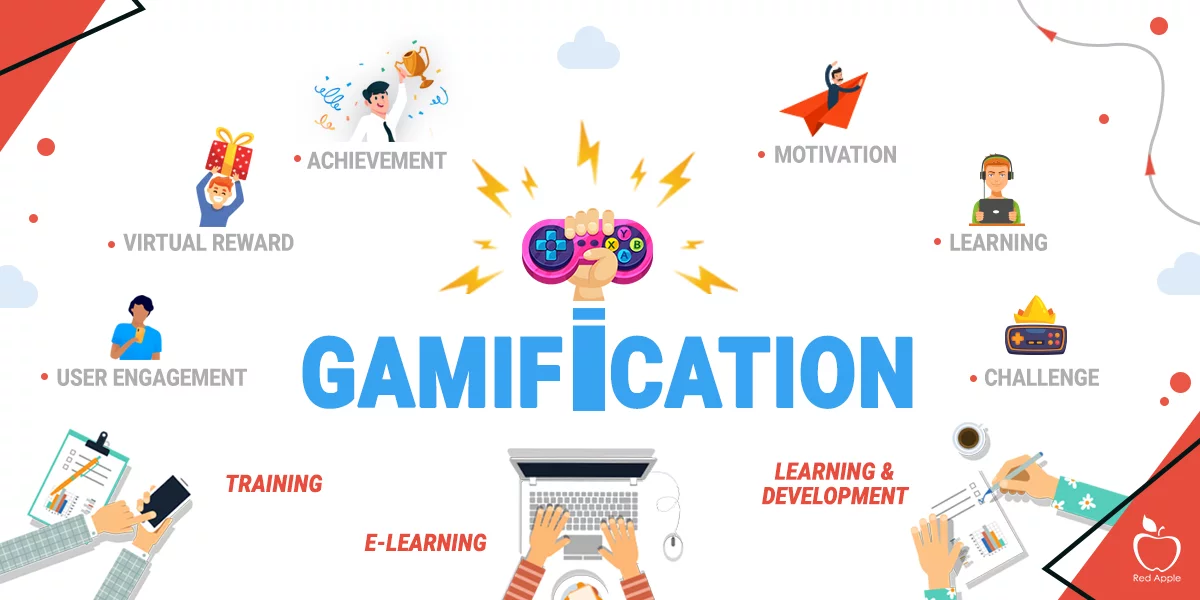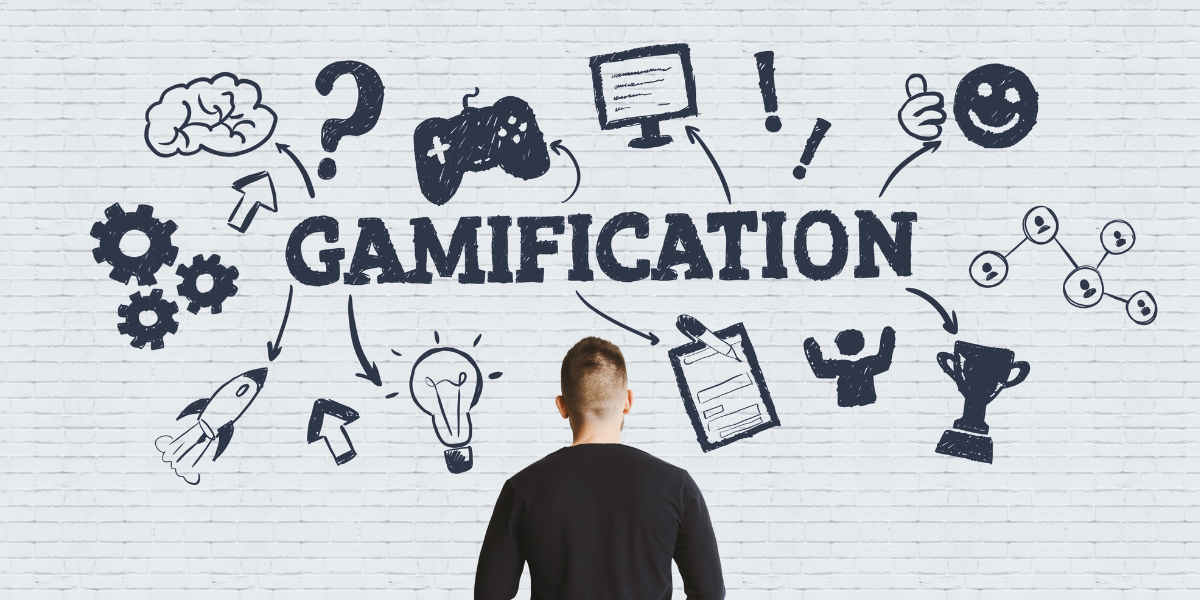Gamification in Learning: Enhancing Engagement with Your LMS

In the ever-evolving landscape of education and corporate training, finding ways to engage learners and keep them motivated is a constant challenge. One innovative approach that has gained significant traction in recent years is gamification. This blog post explores the concept of gamification in learning and how it can enhance engagement within Learning Management Systems (LMS).
Understanding Gamification
Gamification is the integration of game elements, mechanics, and principles into non-gaming contexts, such as education and training of lms definition. These game elements can include points, badges, leaderboards, and narrative-driven experiences. The key goal of gamification is to make learning more engaging, enjoyable, and effective.
Examples of Gamification in Various Industries

Gamification is not limited to education alone; it has found applications in a wide range of industries. For instance, fitness apps use gamification to motivate users to exercise regularly by earning rewards or completing challenges. Customer loyalty programs in retail also employ gamification elements to encourage repeat purchases. In education, gamification is used to make learning more interactive and fun.
Benefits of Gamification in Education
Increased Engagement: Gamification captures learners’ attention by making the learning experience enjoyable and interactive. Learners become more actively involved in the learning process.
Improved Retention: The use of game elements, such as repetition and rewards, can help reinforce learning and improve information retention.
Motivation and Progression: Gamification provides learners with a sense of achievement and progression as they earn points, badges, or move up leaderboards, motivating them to continue learning.
Gamification and Learning Management Systems (LMS)
Learning Management Systems (LMS) are software platforms used to manage, deliver, and track online courses and training materials. Integrating gamification features into an LMS can significantly enhance the overall learning experience.
How Gamification Enhances Engagement
Interactive Learning: Gamification transforms passive learning into an interactive experience. Learners are encouraged to participate actively in activities and challenges.
Immediate Feedback: Gamified LMS platforms provide immediate feedback, helping learners understand their performance and areas that need improvement.
Goal-Oriented: Gamification sets clear goals for learners, giving them a sense of purpose and direction in their learning journey.
Key Gamification Elements in LMS
Points and Badges
Points and badges are common gamification elements in LMS platforms. Learners earn points for completing tasks or modules, and badges are awarded for reaching specific milestones. These elements serve as both motivation and recognition of achievement.
For example, a student in an online language course might earn points for completing vocabulary exercises and receive a “Vocabulary Master” badge for reaching a certain point threshold. This tangible reward system encourages learners to stay engaged and track their progress.
Leaderboards and Rankings
Leaderboards and rankings introduce an element of competition into the learning process. Learners can see how their performance compares to that of their peers. While competition can be a powerful motivator, it’s essential to maintain a healthy and supportive learning environment.
For instance, in a corporate training program, employees might compete to earn the top spot on a weekly leaderboard by completing compliance modules. This friendly competition can drive engagement and encourage participation.
Progress Tracking and Feedback
Gamified LMS platforms offer comprehensive progress tracking tools. Learners can monitor their progress through visual dashboards, charts, and statistics. This transparency provides learners with a clear understanding of their strengths and areas that need improvement.
Additionally, immediate feedback is a crucial aspect of gamification. Learners receive feedback after completing quizzes or assignments, helping them learn from their mistakes and reinforcing correct answers.
Storytelling and Narratives
Storytelling and narratives can turn an otherwise mundane learning experience into an exciting adventure. By incorporating storytelling elements, educators can create immersive scenarios that captivate learners’ attention and make the content more relatable.
For example, a history course might use a narrative-driven approach, where learners take on the roles of historical figures and make decisions that shape historical events. This approach not only makes the content more engaging but also enhances comprehension and retention.
Designing Gamified Learning Experiences
Creating effective gamified learning experiences requires careful planning and consideration. Here are some essential steps to design a successful gamification strategy within your LMS:
Setting Clear Learning Objectives
Before implementing gamification, define clear learning objectives and align them with your gamification goals. Consider what skills or knowledge you want learners to gain and how gamification can help achieve those objectives.
Choosing the Right Game Mechanics
Select game mechanics that align with the content and learning objectives. Different mechanics work better for various types of content. For instance, a quiz-style leaderboard might work well for factual knowledge assessments, while a narrative-driven approach might suit complex problem-solving scenarios.
Creating Meaningful Rewards
Design rewards that are meaningful to learners. These rewards can be both intrinsic (e.g., the satisfaction of completing a difficult challenge) and extrinsic (e.g., earning a digital badge). Ensure that the rewards are proportionate to the effort and achievement.
Balancing Challenge and Skill
Maintain a delicate balance between challenge and skill to keep learners engaged. If the challenges are too easy, learners may become bored, while overly difficult challenges can lead to frustration. Regularly assess learner progress and adjust the difficulty level accordingly.
Gamification Best Practices
To maximize the effectiveness of gamification in your LMS, consider the following best practices:
Tailor Gamification to the Target Audience
Understand your learners’ preferences and motivations. Tailor the gamification elements to match the preferences and expectations of your target audience.
Incorporate Feedback Loops
Create opportunities for learners to receive feedback on their performance and progress. Encourage self-assessment and reflection to promote continuous improvement.
Measure and Analyze Learner Engagement
Utilize analytics within your LMS to track learner engagement and assess the impact of gamification elements. Use this data to make informed adjustments to your gamification strategy.
Keep Content Fresh and Updated
Regularly update and refresh the content to prevent learner boredom. Adding new challenges, activities, or storylines can rekindle learner interest.
Real-world Examples of Successful Gamification

Let’s delve into a few real-world examples of organizations and institutions successfully using gamification to enhance learning and engagement:
Case Study 1: XYZ University’s Gamified Biology Course
XYZ University redesigned its online biology course with gamification elements. Students earned points for completing modules, badges for mastering specific topics, and competed on leaderboards. This approach significantly increased student participation and performance. The university also noted a decrease in dropout rates, as students were motivated to progress through the course.
Case Study 2: ABC Corporation’s Employee Training Program
ABC Corporation implemented a gamified employee training program to enhance compliance training. Employees received rewards and recognition for completing modules and achieving high scores on assessments. The competitive element encouraged employees to complete training promptly and thoroughly, resulting in increased compliance rates.
Case Study 3: Gamification in Language Learning Apps
Many language learning apps, such as Duolingo and Memrise, employ gamification elements to make language acquisition enjoyable. Learners earn points for completing lessons, unlock new levels, and compete with friends. These apps have seen widespread success in making language learning accessible and engaging for users of all ages.
Challenges and Pitfalls in Gamification
While gamification offers numerous benefits, it also presents challenges and potential pitfalls:
Potential for Over-Gamification
Overusing gamification elements can lead to fatigue or disillusionment among learners. It’s essential to strike a balance and avoid overwhelming learners with too many game mechanics.
Ensuring Inclusivity and Accessibility
Not all learners may respond positively to gamification, and some may have disabilities that affect their ability to engage with certain game elements. Ensure that your gamification strategy is inclusive and accessible to all learners.
Monitoring and Preventing Cheating
In competitive environments, some learners may attempt to cheat or exploit the system to earn rewards. Implement measures to detect and prevent cheating while maintaining a fair learning experience.
Avoiding Disengagement Due to Excessive Competition
While competition can be motivating, excessive competition may discourage some learners, especially those who are more introverted or less competitive by nature. Strike a balance between competition and collaboration.
Future Trends in Gamified Learning
As technology continues to advance, the future of gamified learning holds exciting possibilities:
Advances in AI and Personalization
Artificial intelligence (AI) can provide personalized learning experiences by adapting gamification elements to individual learner preferences and needs. AI-driven LMS platforms can analyze learner data and recommend customized challenges and rewards.
Virtual and Augmented Reality Applications
Virtual reality (VR) and augmented reality (AR) have the potential to revolutionize gamified learning. Learners can immerse themselves in virtual environments, making learning more engaging and interactive.
Cross-Platform Gamification in Education
With the increasing use of mobile devices, gamification can extend beyond traditional LMS platforms. Mobile apps and social media platforms can incorporate gamification elements to make learning accessible on various devices and platforms.
Conclusion
Gamification in learning is a powerful tool for enhancing engagement within Learning Management Systems. By incorporating game elements, feedback mechanisms, and compelling narratives, educators and organizations can create more enjoyable and effective learning experiences. While challenges and pitfalls exist, thoughtful design and continuous improvement can lead to successful gamification strategies that motivate learners and improve learning outcomes. As technology evolves, the future of gamified learning holds even more exciting possibilities for engaging learners of all ages and backgrounds. Embrace the power of gamification to transform your LMS into a dynamic and engaging learning environment.


